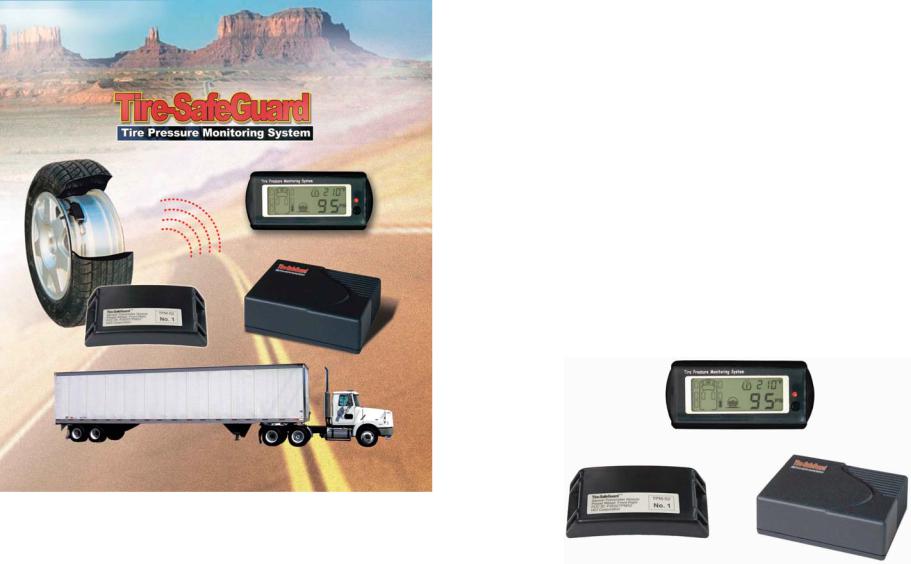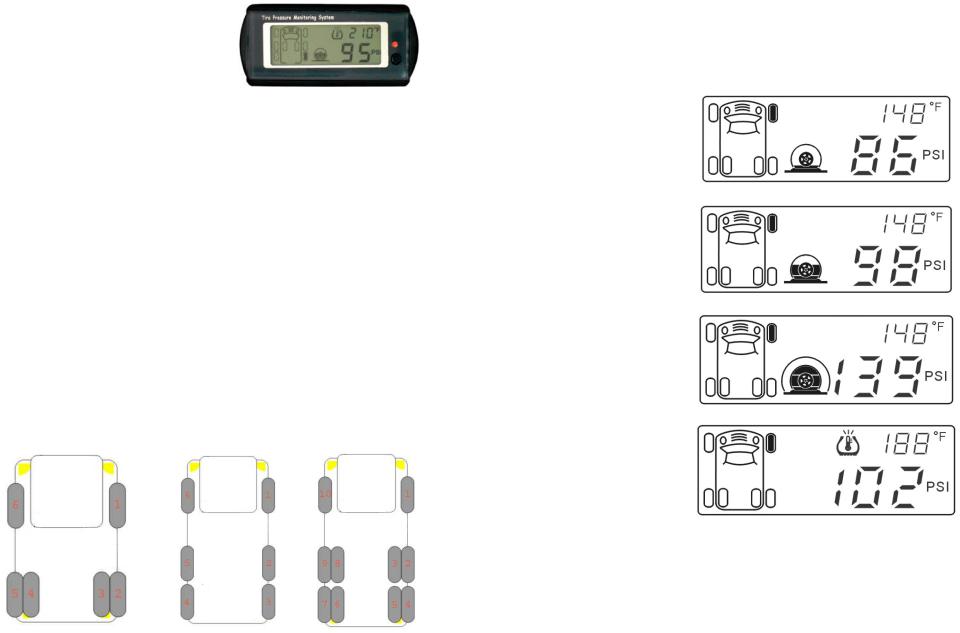Tire-SafeGuard TPM-W User Manual

Tire-Safeguard
Tire Pressure Monitoring System
TPM-W Models
Operator’s Manual
HCI Corporation www.tiresafeguard.com ● contact@tiresafeguard.com
1. Introduction
Tire-Safeguard is a wireless tire pressure monitoring system. This valuable addition to your vehicle will help you drive safer. TireSafeguard automatically monitors your vehicle tires, and will immediately alert you of abnormal tire pressure and/or temperature, providing a timely warning to you in order for you to take corrective action. In addition, Tire-Safeguard’s digital display makes tire pressure maintenance easy. You will no longer need to manually check the tires with a pressure gauge. Consequently, your tires can easily be kept in optimal operating condition. The resulting benefits are obvious: reduced uneven tire wear, reduced severe tire damages, reduced air loss related tire failures, increased tire life, improved fuel efficiency, improved vehicle braking and handling. Best of all, Tire-Safeguard will help you drive with enhanced vehicle safety and with less worry of flat tires and blowouts.
2. Tire Pressure Monitoring System (TPMS) Overview
The major components of Tire-Safeguard TPMS are: one sensortransmitter per tire, a receiver, and a display. For the rim-mounted model, the sensor-transmitter is affixed inside the tire on the wheel with a stainless-steel band. The sensor-transmitter automatically and continuously monitors the tire and, periodically, transmits out RF
signals with the current tire pressure and temperature readings. Upon detection of abnormal tire pressure and/or temperature, the sensortransmitter will immediately issue a warning signal. The receiver captures the signals from the sensor-transmitters and forwards them to the display unit.
Mar. 2006 |
1 |
TPM-W Operator’s Manual |

3. The Display
The display unit is the interface between the TPMS and the user. The display has a graphical
representation of the vehicle with tire icons on the left side of the screen, a thermometer icon and temperature reading on the upper right, and a tire status icon and pressure reading on the lower right side.
There is a status lamp on the right side of the display. Below the status lamp there is a control button. Pressing the control button will display individual tire pressure and temperature readings; a darken tire icon on the vehicle graphic indicates the associated tire location.
On the right edge of the display unit there is a button for programming the system. Detail description of the set up procedures will be described in a later section.
3. 1 Operation
When the vehicle power is on the status lamp will light up. The display will show the current tire pressure and temperature one-by-one from tire No. 1 to the last tire. The display then turns off and only the status light remains lit. Normally the light is in green color. When the TPMS detects a low tire pressure situation or when any tire is rapidly losing air, the lamp turns to red and an audible warning signal will be issued. For other tire pressure and/or temperature abnormality, the status light would be in yellow.
The order of tire information display for different vehicles is as follows:
Mar. 2006 |
2 |
TPM-W Operator’s Manual |
3. 2 Warnings
Upon detection of abnormal tire pressure and/or temperature the system will display one of the following warnings. The display lasts 8 seconds and then will switch to a screen as shown in Abnormal Situation Display (described in the next section). For severe warnings (low pressure and rapid pressure change) the system will also sound an 8-second alarm.
Low pressure or blowout The tire icon is hollow; indicating tire pressure is low or tire is rapidly losing 3+ PSI of air within a number of seconds.
Slow air leak
The tire icon is 2/3 full; indicating tire pressure depletion of 3 PSI or more within 2 to 10 minutes.
High tire pressure The tire icon is full with
an outer shell; indicating the tire pressure is too high.
High temperature The high-temp icon is visible; indicating tire
temperature is too high.
3.3 Abnormal Situation Display
A persistent abnormal tire situation (with possibly several tire abnormalities) will cause one of the following warnings to be displayed. The warnings are listed below in the order of precedence for display selection (from multiple abnormalities) by the system.
Mar. 2006 |
3 |
TPM-W Operator’s Manual |
